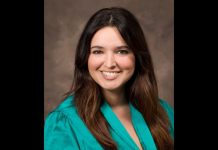A Man Convicted Of Murder 20 Years Ago Will Have A New Trial
IL For www.theindianlawyer.com
A man convicted of murder more than 20 years ago will have a new trial after the Indiana Supreme Court held Friday that his trial counsel performed deficiently and his appeal was not barred by the doctrine of laches.
Benjamin Laughlin and Stephen Sites were driving around Anderson looking for crack cocaine one night in April 1995 when they approached three people in an alley who they believed to be cocaine dealers. The dealer got in the cab of the truck Laughlin and Sites were driving and pulled a gun, and when Laughlin tried to grab the gun it was discharged, striking Laughlin in the abdomen.
The dealer jumped out of the truck and ran away, and Laughlin eventually died from his injuries. Donnie Smith, one of the three people in the alley, testified that Trondo Humphrey had been carrying a gun that night, though Smith said he did not hear any shots or see Humphrey approach or enter the truck.
But Roosevelt Brooks, who Smith said was also in the alley, gave an unsworn written statement saying he heard a “noise†after Humphrey approached the truck, then said Humphrey confessed to shooting one of the men. However, at trial Brooks said he was not with Smith and Humphrey on the night of the shooting and repudiated his statement, which had been admitted to impeach the credibility of his courtroom version, saying it was fabricated due to police pressure.
Humphrey was convicted of murder in 1996 and was sentenced 60 years. He appealed, arguing the Madison Circuit Court had abused its discretion in admitting Brooks’ statement into evidence and had erred when it did not admonish the jury to consider the statement for impeachment purposes only. The Indiana Supreme Court initially affirmed his conviction in Humphrey v. State, 680 N.E.2d 836, 837-38 (Ind. 1997), holding that the statement was admissible for impeachment purposes only and noting that there were no claims of ineffective assistance of counsel raised in the appeal.
Then, 15 years later, Humphrey filed a petition for post-conviction relief, alleging his trial counsel had rendered ineffective assistance by failing to object to the admission of Brooks’ statement on hearsay grounds, failing to request the admonishment to the jury, failing to “object to and improperly endorsing the trial court’s erroneous instruction on prior inconsistence statements†and, finally, failing to offer an instruction that “reflected a correct statement of law.â€
The state denied Humphrey’s claim and argued that they were barred by the doctrine of laches. The post-conviction court found that Humphrey’s claims were not barred but denied relief on the merits. The Indiana Court of Appeals affirmed the post-conviction court on the issue of laches but reversed on the substantive claims, holding that “Humphrey was prejudiced by counsel’s errors that allowed the jury to consider as substantive evidence the only evidence that identified Humphrey as the shooter.â€
The Indiana Supreme Court on Friday remanded the case, Trondo L. Humphrey v. State of Indiana, 48S02-1609-PC-480, for a new trial, pointing out a variety of errors made by Humphrey’s counsel its opinion.
Justice Robert Rucker, writing the majority opinion, said Humphrey’s counsel only objected to Brooks’ statement on the basis of an improper foundation, not on hearsay. Had a hearsay objection been raised, the court would have been required to sustain it, Rucker said, so counsel’s failure to do so was a deficiency in his performance.
Similarly, Indiana precedent holds that “if a defendant believes there is a danger that a jury could use a statement as substantive evidence, then it is incumbent upon the defendant to request that the jury be admonished that the statement be used to judge the witness’s credibility only.†Because Humphrey’s counsel did not move for such an admonishment or limiting instructing, his performance was deficient, the high court found.
Further, the trial court’s jury instruction, which stated that jurors “may also consider the out-of-court statements as evidence…†was an incorrect statement of law to which Humphrey’s counsel should have objected. Given those deficient performances, Rucker wrote that Humphrey had satisfied the first prong of the two-part test in Strickland v. Washington, 466 U.S. 668 (1984).
Humphrey also satisfied the prejudice prong of the Strickland test, Rucker wrote, noting “there is simply no admissible evidence that Humphrey possessed a gun that evening, let alone that he shot Laughlin.â€
Thus, the Supreme Court reversed the judgment of the post-conviction court, writing, “In viewing the evidence without the inadmissible hearsay statements, we believe there is a reasonable probability the result of Humphrey’s trial would have been different, namely Humphrey would not have been convicted of murder.â€
In a concurring opinion joined by Justice Geoffrey Slaughter, Justice Mark Massa wrote that the remedy of a new trial was “regrettable and avoidable.†Further, Massa wrote the state failed to develop its laches arguments at the post-conviction court level, leaving those arguments unavailable on appeal and compelling the high court to affirm the determination that Humphrey’s petition was not barred by laches.
“But make no mistake, being compelled to act is a far cry from being satisfied with the outcome, particularly when the outcome – retrial of a convicted murderer two decades later – can subject the criminal justice system to the dismayed contempt of survivors and the public writ large,†he wrote.




